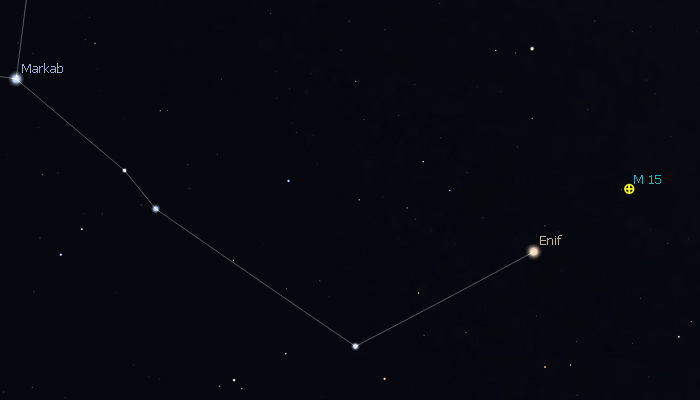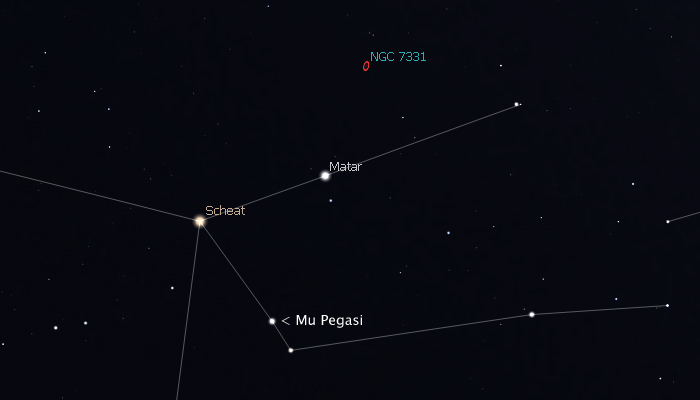
with David Fuller

Constellation Spotlight: Pegasus the Flying Horse
Pegasus was born from a violent act: The hero Perseus, cut off Medusa's head by looking at a reflection of the Gorgon in his shield. He brought the head back to Cepheus to help save the kingdom from the threat of a sea monster, by holding up the severed head to turn the sea creature into stone. But the body of Medusa - or the blood from the body - became Pegasus, a beautiful, winged horse.
It's perhaps worth remembering why this occurred, although this might be viewing the story more through a modern-day lens than an ancient Greek one: Medusa was raped. Then, after her rape, she was banished and punished by Athena - Poseidon's niece (the two were not on friendly terms - then again, what Greek gods were?) - to have snakes for hair that would turn men to stone.
So.. get raped, be turned ugly for being a victim of rape, then get decapitated because you can turn men and sea creatures to stone if they look at you.
Sometimes I wonder about the Greek mythological stories!
But that misses the point I was making - the body is turned into this beautiful white winged horse. And of 88 constellations in the sky - many of which don't bear much resemblance to what they are supposed to represent - it isn't too hard to see the head, wings and forward legs of Pegasus - albeit usually upside-down from many northern hemisphere locations. The 2nd magnitude star Enif forms the nose, with a very horse-like neck attached to the body. And that is made up of a near-perfect square in the sky of nearly equal brightness stars.

That's even called "The Great Square of Pegasus." And below - well, for many of us due to the "upside down" view, it's above - are the two legs reaching forward, as if galloping across the sky.
But astronomically speaking, it's interesting how the Milky Way sort of cheated Pegasus out of much in the way of deep sky objects within our galaxy. There's... well just one object, really: Messier 15. That's the only one inside the boundaries of Pegasus (see below). If you'd like to find that globular cluster, here's a guide on how to locate Messier 15.

So, that seems to limit what is interesting to see in Pegasus - or does it?
More than meets the eye
Pegasus has quite a few interesting objects to see. One is a rather difficult double star, that is mentioned in the video link above. But if you're interested in more, here's a few to check out:
Enif (Epsilon Pegasi)
If you're looking for Messier 15, you'll stop at this star on the way. While this is a wide pair, separated by 144", this set of stars does a really cool trick with your eyes. The components are highly unequal in brightness - 2.4 and 8.7 respectively. So the 8.7 star will appear quite dim.

But try this: While looking at the pair, move your telescope so that it wobbles slightly back and forth, in a motion that is perpendicular to the line created by these two stars.
Now, what should happen is we'd see both move back and forth together. But it DOESN'T!
Because our eyes take longer to perceive the light by the fainter star, it appears to swing like a pendulum. Really! Try it the next time you're out at your telescope. It's a fascinating optical illusion. Sir John Herschel (1792 - 1871) first noticed this.
NGC7331
This galaxy group is also known as Caldwell 30 and sometimes as the Deer Lick Group. While the galaxies themselves have nothing to do with deer licking anything, the name comes from an amateur astronomer having a memorable view of this particular set of galaxies from a place called Deer Lick Gap. Somehow the name stuck!

But these are quite bright for galaxies, and fairly large too. Follow a line from Mu Peg through Matar (Eta Peg), and then go another 4 degrees from Matar. Some observers can pick out this group from large finder scopes or in binoculars from dark sky sites, but many will need a telescope for a good look. But with the largest galaxy measuring 10 arc minutes wide by 3' tall, this should be one to take a look at while you're out on the next clear night.
Red vs. blue
No, I'm not talking political parties of the USA here. I'm talking actual star colors. Look at the stars of the Great Square. The two on the western side - near the "neck" and "legs" of Pegasus. The one by the neck area is Markab. That's a B-class star that is a blue white star - but, has reached the end of it's hydrogen fusing days (years?). If it hasn't, then it's very close. And when it does, it will go into red giant phase.

Which brings us to our next star, Scheat. That's the other star on the western side of the square. This star has gone into red giant phase, and it's so large, it's size would place it well outside the orbit of Mercury, and somewhere close to Venus! Look at these two stars with binoculars or a telescope. To see the colors better, try defocusing the image. The color will pop right out at you.
Point to Polaris
And while this isn't exactly for observing, it is a useful trick to know. Most people are aware of using two of the Big Dipper stars to "point to Polaris," the North Star. But did you know that you can use Markab and Scheat to do the same thing? This is helpful too, because right now, the Big Dipper is quite low in the sky for even well-north northern hemisphere observers, and invisible to those closer to the equator.

But, draw a line from 2nd magnitude Markab through 2nd magnitude Scheat, and then continue on for another 1/3 of the sky - about 60 degrees - and you will reach 2nd magnitude Polaris. Yes! It's that easy - and that's helpful to know too. It's one more way to "Know which way is north at night."
So there's a few interesting things about Pegasus - a constellation not only worth knowing to help you find north, but one that can lead you to some interesting - if somewhat offbeat (get it? A pendulum? Okay, never mind...) objects to see here.
Keep your eyes on the sky, and your outdoor lights aimed down, so we can all see what's up!
